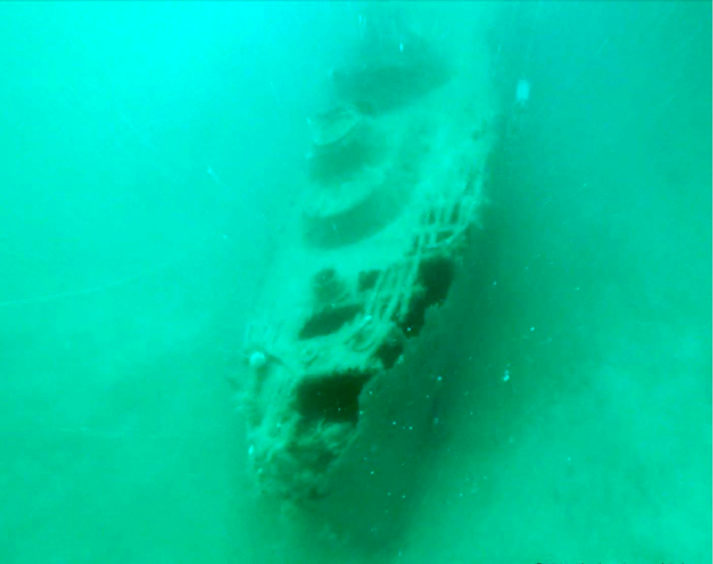It is a story that stands out for its poignancy, even among the tragedies of World War II.
And now, one small mystery in the sinking of HMS Royal Oak in the first weeks of the war has finally been solved.
The location of one of the small vessels used by sailors attempting to escape from the sinking battleship has been uncovered.
Orkney Research Centre for Archaeology (Orca), the University of the Highlands and Islands Archaeology Institute and Sula Diving can now confirm the position of the missing HMS Royal Oak steam pinnace.
A German submarine fired torpedoes at the Royal Oak while she was moored in Scapa Bay on the night of October 13, resulting in the deaths of 834 men.
Documentary evidence indicates that around 100 crew members abandoned ship via her port side pinnace, which had a lifesaving capacity of 59. The starboard side pinnace went down with Royal Oak.
The small pinnace had not got up steam, so boards were used to paddle the vessel away from the sinking Royal Oak. It began to rock due to being overloaded and the chief buffer tried to counter the movement by shouting instructions, “Lean to starboard, lean to port”.
Some on deck were ordered below to make room as more men tried to climb onboard.
But the vessel capsized, throwing those on deck into the water and trapping those who had gone below.
Some crew scrambled onto the upturned hull but many were lost.
The vessel then righted herself, capsized once more and sank.
Missing steam pinnace found 984ft from HMS Royal Oak wreck site
The location of this little ship was not known until last month, when the Shiptime Maritime Archaeology Project pinpointed the shipwreck on multibeam sonar, 984ft from the main wreck site. The site was surveyed by Triscom Enterprise as part of the project.
The project brought together universities, commercial companies and government bodies.
Previously the site had been scanned by Sula Diving but the identity of the craft had not been established.
Diver Wayne Allen, of Wayne Allen Technical, said: “It was a privilege to be able to assist Sula Diving in recording these historically important sites.”
Alistair Coutts, business development manager of Seatronics, said: “Seatronics were delighted to have the opportunity to work with the collected specialists on this exciting project, providing ROV, positioning and 3D modelling and spatially cross-referenced video inspection equipment.”
